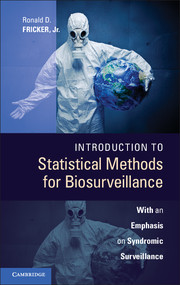Book contents
- Frontmatter
- Content
- Preface
- Acknowledgments
- Part I Introduction to Biosurveillance
- Part II Situational Awareness
- 3 Situational Awareness for Biosurveillance
- 4 Descriptive Statistics for Comprehending the Situation
- 5 Statistical Models for Projecting the Situation
- Part III Early Event Detection
- Part IV Putting It All Together
- Part V Appendices
3 - Situational Awareness for Biosurveillance
from Part II - Situational Awareness
Published online by Cambridge University Press: 05 March 2013
- Frontmatter
- Content
- Preface
- Acknowledgments
- Part I Introduction to Biosurveillance
- Part II Situational Awareness
- 3 Situational Awareness for Biosurveillance
- 4 Descriptive Statistics for Comprehending the Situation
- 5 Statistical Models for Projecting the Situation
- Part III Early Event Detection
- Part IV Putting It All Together
- Part V Appendices
Summary
He who loves practice without theory is like the sailor who boards ship without a rudder and compass and never knows where he may be cast.
Leonardo da Vinci (1452–1519)Situational awareness (SA) is one of the two main functions of a biosurveillance system. As Homeland Security Presidential Directive 21 (HSPD-21) states, biosurveillance is “the process of active data-gathering with appropriate analysis and interpretation of biosphere data that might relate to disease activity and threats to human or animal health – whether infectious, toxic, metabolic, or otherwise, and regardless of intentional or natural origin – in order to achieve early warning of health threats, early detection of health events, and overall situational awareness of disease activity” [emphasis added] (US Government, 2007).
Intuitively, most interpret the term “situational awareness” to mean that one is cognizant of one's surroundings. But awareness in this sense is actually only one part of situational awareness. A solid understanding of, and rigorous definition of, situational awareness in a biosurveillance context is critical for being able to assess whether a biosurveillance system, in fact, provides situational awareness, howsuch systems should be modified to improve biosurveillance situational awareness, and whether one system or method provides better situational awareness and thus should be preferred.
- Type
- Chapter
- Information
- Introduction to Statistical Methods for BiosurveillanceWith an Emphasis on Syndromic Surveillance, pp. 55 - 66Publisher: Cambridge University PressPrint publication year: 2013



